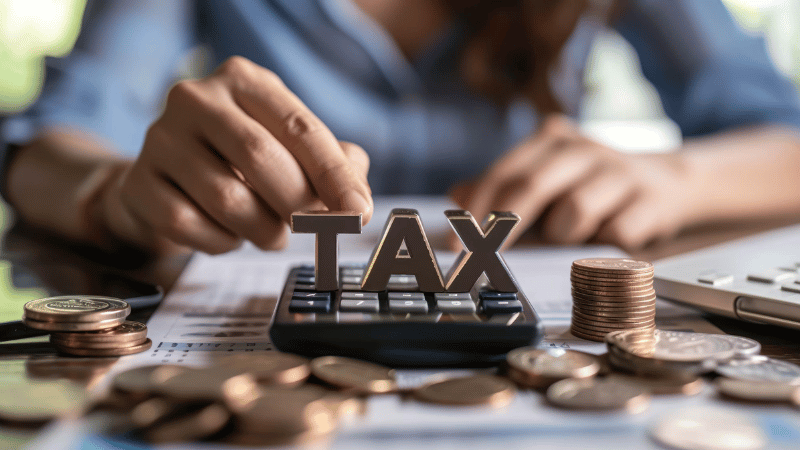Missouri R&D Tax Credits: Maximizing Tax Benefits for Businesses

Do businesses in Missouri get a Research and Development Tax Credit or an R&D Tax Credit? We’ll discuss pertinent details on this tax claim. This will guide qualified businesses in maximizing this tax credit.
What are Missouri R&D Tax Credits?
A Missouri Bill, HB 2400, was signed into law in 2022, impacting business across the state. While the state offers sales tax exemption for research and development purchases made within the state, Missouri hasn’t had a dedicated R&D tax credit program since 2005.
The legislation sets aside $10 million for a new R&D tax credit to help businesses finance innovation. It also dedicates $5 million to small, minority, and women-owned businesses. The tax credit equals 15% of qualified research expenses and up to 20% if the research is done through a Missouri university or public or private college.
This tax credit is available from January 1, 2023, to December 31, 2028. No single taxpayer may be issued more than $300,000 in credits per calendar year, and there is an annual program cap of $10 million for all credits issued in any calendar year. $5 million of the program cap is reserved for Minority Business Enterprises, Women’s Business Enterprises, and small businesses.
Does Missouri have an R&D credit?

Yes, HB2400 reenacted the Missouri R&D Tax Credit program, which stopped in 2005. This program is designed to encourage research and development within Missouri.
Eligibility Criteria for Missouri Businesses
Qualified applicants include individuals, partnerships, certain corporations, and charitable organizations exempt from federal income tax and whose Missouri-unrelated business taxable income, if any, would be subject to state income tax.
Four-Part Test for Qualifying Activities
Technological in Nature
To qualify for research credits, the activity should fundamentally rely on principles of physical sciences, biological sciences, computer science, or engineering and scientific methods. This requires the use of technology or engineering in a field of science.
Moreover, it aims to develop or improve a product, process, or software’s functionality, performance, reliability, or quality. Examples include developing new materials, improving manufacturing processes, or enhancing software functionality.
Permitted Purposes
The activity must relate to a new or improved business component’s function, performance, reliability, quality, or composition. It should intend to develop a new or improved product, process, or software. Moreover, it ensures that the research is not conducted for non-commercial purposes, such as social science or arts-related endeavors.
Elimination of Uncertainty
The activity must be intended to discover information to eliminate uncertainty concerning a particular method or capability for developing or improving a product or process. Uncertainty exists if the capability, method, or design of the product, process, or software is uncertain or not readily known.
Process of Experimentation
The activity must constitute the process of experimentation involving simulation, evaluation of alternatives, confirmation of hypotheses through trial and error, testing and modeling, or refining or discarding of hypotheses. It should involve a systematic process designed to evaluate one or more alternatives and include testing hypotheses, modeling, prototyping, and iterative analysis. It also needs to identify uncertainties and test potential solutions to resolve them.
Carrying Forward & Transferring the Missouri R&D Tax Credit
The excess may be carried forward for the next 12 succeeding years when the credit amount exceeds a taxpayer’s tax liability.
Moreover, up to 100% of the credit may be transferred, sold, or assigned by filing a notarized endorsement thereof with the Department that names the transferee, the amount of tax credit transferred, and the value received for the credit, as well as any other information reasonably requested by the Department.
Qualifying Missouri Research Expenditures
Generally, the R&D tax credit covers two categories of qualified research expenses: in-house and contract research expenses. In-house research expenses include wages paid to employees for any qualifying activities performed, supplies purchased to conduct qualified research, and contract research expenses paid to conduct qualified research.
To clarify, only wages, including all taxable wages reported on an employee’s W-2 Form, can be declared qualifying research expenditures. In addition, it should be highlighted that only employees involved in qualified research activities or directly supporting these initiatives are qualified.
Any tangible property bought to conduct qualified research can be considered a supply for this tax credit. For example, a Missouri firm working to improve a product’s quality may declare the materials used for that project as supply expenses.
Contract research expenses are when a business performs qualified research on behalf of the taxpayer. In this case, 65% of the amount paid to the non-employee can be considered a qualified expense.
Limitations of the Missouri R&D Tax Credits

The highest amount of credit a taxpayer may claim in a year is $300,000. The aggregate of all tax credits shall not exceed $10 million in any year. $5 million of such amount is reserved first for minority-owned, women-owned, and small businesses.
If total eligible claims for credits received in a calendar year exceed the annual cap, each eligible claimant shall be issued credits pro-rata, given that all new businesses, defined as businesses less than five years old, are issued full tax credits first.
Missouri-qualified research and development equipment purchases are exempt from all state and local sales and use tax. The program’s provisions authorized under H.B. 2400 will automatically sunset on December 31, 2028. If the program is reauthorized, the automatic sunset will be on December 31, “twelve years after the effective date of the reauthorization of this section.”
How to Claim Missouri R&D Tax Credits
Companies must file IRS Form 6765, Credit for Increasing Research Activities, for this tax benefit. This process includes identifying qualifying research activities and providing documentation proving these costs meet the Internal Revenue Code Section 41 requirements. Companies may use business records, financial records, oral testimonies, and technical documents.
Before you complete this Form, you should familiarize yourself with the instructions mandated by the IRS. The PDF version of this Form can be easily downloaded from the IRS website.
In general, the IRS Form 6765 has four sections:
- Section A is used to claim the regular credit and contains 11 lines of required information.
- Section B applies to the Alternative Simplified Credit or ASC.
- Section C identifies additional forms and schedules that require reporting based on one’s business structure.
- Section D only applies to qualified small businesses or QSBs making a payroll tax election.
The IRS recommends that companies calculate their credit using both regular and simplified credit methods, and then they fill out the section (A or B) that would result in the greatest tax benefit.
Additional Qualified Research Expenses
“Additional qualified research expenses” means the difference between qualified research expenses, as certified by the Director, incurred in a tax year subtracted by the average of the taxpayer’s qualified research expenses incurred in the three immediately preceding tax years. “Qualified research expenses” has the same meaning as provided in IRC Sec. 41.
Maximizing the Benefits of the Missouri R&D Tax Credit

Companies that intend to make the most of this tax claim as they would with corporate income tax savings should do the following:
- Identify all qualifying expenses: Companies should determine the average qualified research expenses to declare it in their application.
- Maintain all the expense documentation: Companies are required to present documentation that the activities lead to economic development.
- Choose the most beneficial tax credit for your business: Companies should determine which tax claim benefits their business the most.
Next Steps
Companies intending to file for this tax credit should seek expert assistance. Miscalculation and lack of proper documentation can be costly. Fortunately, many experts can help ensure businesses get it right. Contact us today and get the right consultation for your Missouri business.
FAQs
Does Missouri have a state tax credit?
Yes, starting January 1, 2023, the Missouri Tax Credit has been reinstated.
What are 70% Missouri tax credits?
70% Missouri tax credits refer to a dollar-for-dollar reduction of the Missouri state income tax you owe.